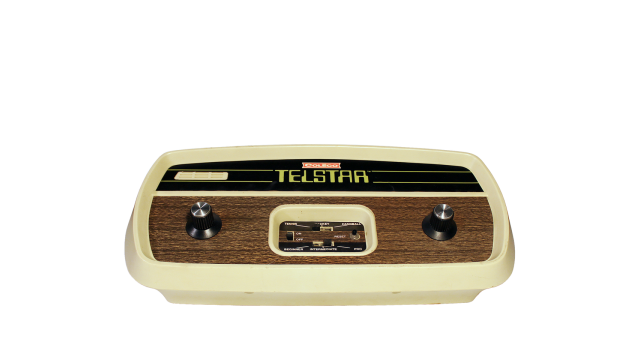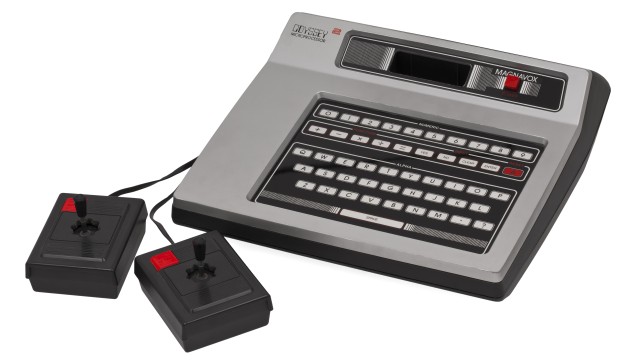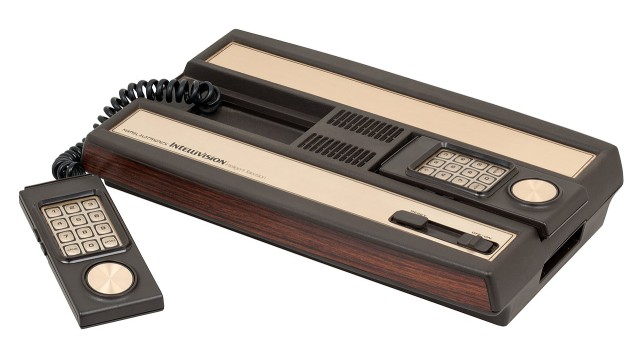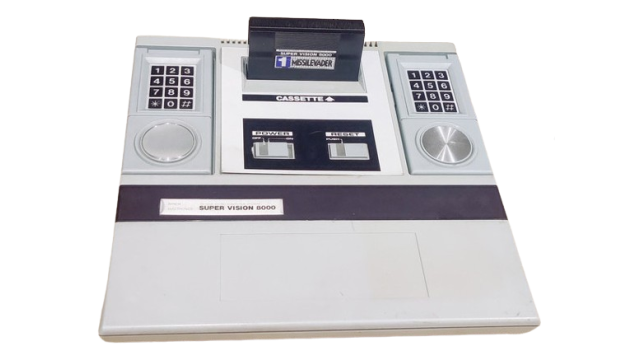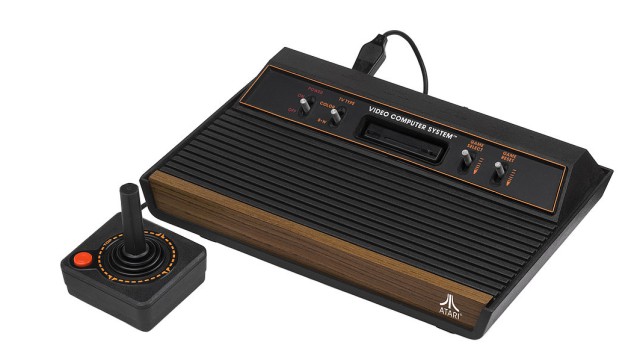
Atari 2600
Launches: 1977
Discontinued: 1992
Life span: 15 years
Units sold: 30 000 000
Generation: 2nd
Country releases of Atari 2600
 USA: USA: | 11/Sep/1977 | 199 | $ |
 France: France: | 01/Sep/1981 |
 Atari 2600 technical specifications
Atari 2600 technical specifications
CPU: MOS 6507
Memory: 128 B
 Atari 2600 video specifications
Atari 2600 video specifications
Atari 2600 graphics capabilities.
Video chip:
Video connection: Radio Frequency
Atari 2600 video modes
| 160×192 |
 Atari 2600 audio specifications
Atari 2600 audio specifications
Atari 2600 sound capabilities.
Audio chip:
Audio mode:
 Controllers of Atari 2600
Controllers of Atari 2600
 Atari 2600 games support
Atari 2600 games support
Support: Cartridge
Atari 2600 games
Games library:
Atari 2600 story
The Atari 2600, originally known as the Atari Video Computer System (VCS), is a landmark in video game history, representing a major leap forward in the home entertainment industry. Its creation and development were rooted in the early 1970s when Atari, then a fledgling company founded by Nolan Bushnell and Ted Dabney, made its mark with arcade games like Pong. The success of Pong, both in arcades and as a home console, demonstrated the potential of video games as a consumer product, prompting Atari to explore more advanced technology.
The concept of the Atari 2600 emerged from the desire to create a versatile gaming console that could play multiple games, unlike the single-game devices of that era. Atari's engineers, led by Jay Miner, a key figure in the development of the console's hardware, worked on creating a machine that could accommodate different games through interchangeable cartridges. This idea was revolutionary, as it allowed users to buy a single console and expand their library of games, creating a more enduring product.
The development of the Atari 2600 was a complex and ambitious project. At its core was the MOS Technology 6507 microprocessor, a cheaper and less powerful variant of the popular 6502 CPU. This decision was made to keep costs down, which was a crucial factor in making the console affordable for the mass market. The 2600 also featured the Television Interface Adaptor (TIA), a custom chip designed by Miner, which handled graphics and sound. The TIA was integral to the system's ability to produce color graphics and simple sounds, essential features that distinguished it from earlier consoles.
As the console took shape, Atari faced significant challenges, particularly with game development. Creating games for the 2600 was a new frontier, and programmers had to work within the system's limitations—its mere 128 bytes of RAM and limited processing power—while still crafting engaging and entertaining experiences. Despite these hurdles, the team produced several innovative titles that demonstrated the potential of the new system.
Atari launched the Video Computer System (VCS) in September 1977, with an initial offering of nine games, including titles like "Combat," "Indy 500," and "Basic Math." The VCS was priced at $199, a significant sum at the time, but it was competitive given the advanced technology and the inclusion of two joystick controllers and a game cartridge. Early marketing efforts emphasized the system's versatility, showcasing the variety of games available and highlighting its potential as a family entertainment device.
Market reception to the Atari 2600 was initially lukewarm. The console faced stiff competition from dedicated consoles like the Fairchild Channel F, and the novelty of interchangeable cartridges was not immediately recognized by consumers. However, Atari's aggressive marketing, coupled with the release of new and popular games, gradually built momentum. The inclusion of arcade hits like "Space Invaders" in 1980 was a turning point for the 2600, dramatically boosting its popularity and cementing its status as a must-have home entertainment system.
As the 2600 gained traction, its success had a transformative effect on Atari and the broader video game industry. By the early 1980s, the console had become a cultural phenomenon, with millions of units sold worldwide. The 2600's success also spurred the development of a vast library of games, both from Atari and third-party developers, which further fueled its popularity. Notably, the console's flexibility allowed it to stay relevant for years, even as new technologies emerged.
The Atari 2600's market impact was profound, establishing the video game console as a staple of home entertainment and setting the stage for the future of the industry. It also introduced many elements that became standard in the gaming world, such as the use of microprocessors in consoles and the concept of third-party game development. Despite the challenges Atari faced, including competition and market saturation, the 2600 remained a best-seller throughout the early 1980s, helping to define the first golden age of video gaming.
Next Atari console: Atari 5200
